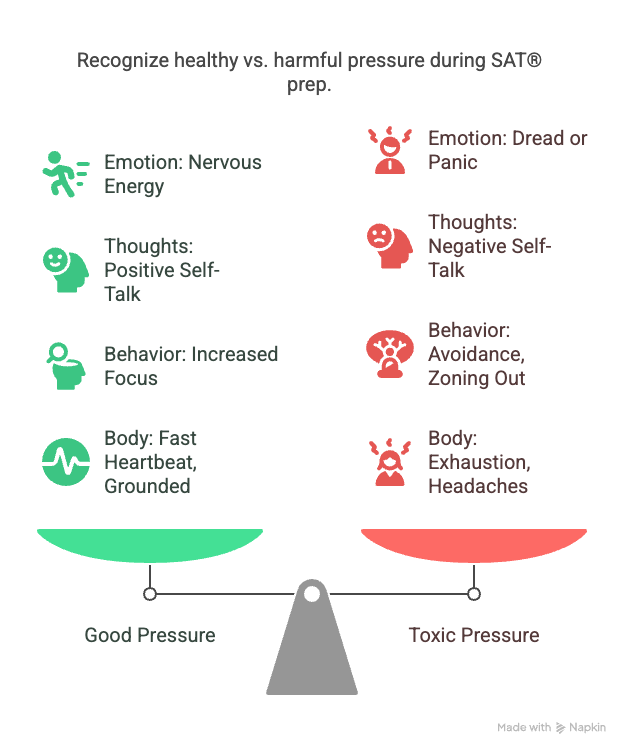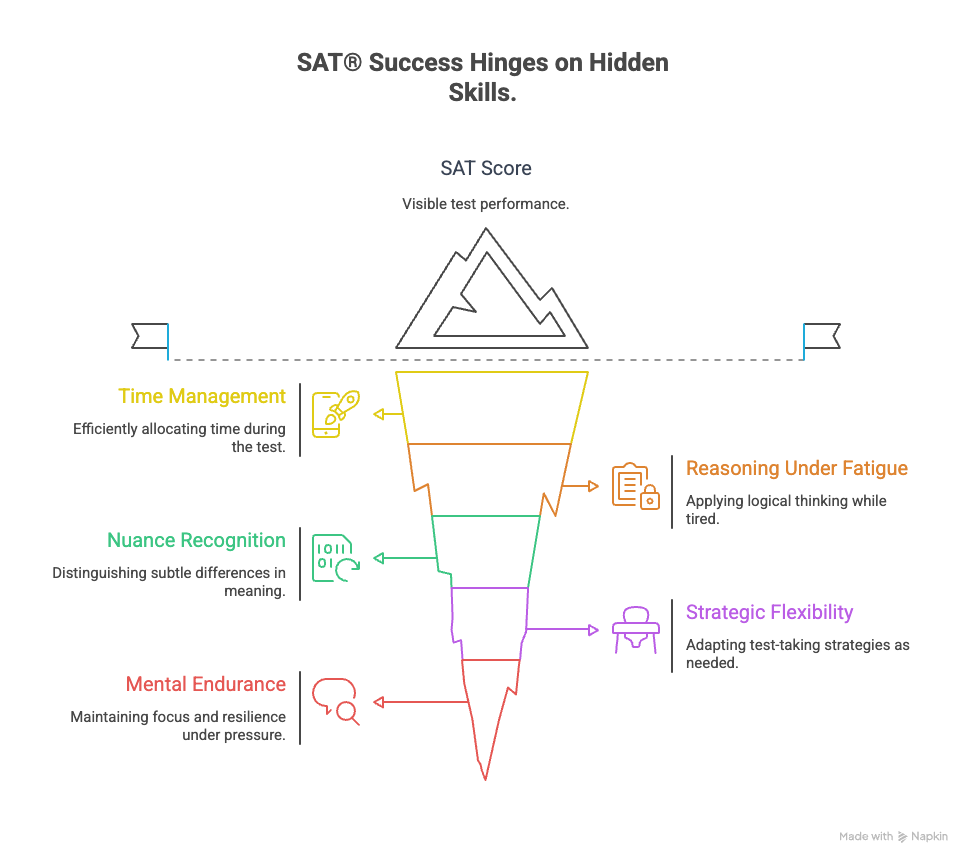Not all stress is bad. Not all pressure breaks you.
In fact, the right kind of pressure actually sharpens your mind. It boosts focus, heightens memory, and pushes you to rise during SAT® prep.
But push too far, for too long, and that same pressure can start to fracture you. You stop performing. You start coping. You burn out.
Most students are never taught this. They’re told either:
- "Just relax." (Not helpful)
- Or "pressure makes diamonds." (Not true. Pressure also shatters bones.)
Let's clear the noise surrounding SAT® prep and mental resilience.
There’s a Curve. You’re Probably Ignoring It for Your SAT® Study Strategies.
In 1908, psychologists Robert Yerkes and John Dodson published a study showing the relationship between arousal (pressure) and performance. Their findings became the Yerkes-Dodson Law, and it's been replicated across everything from sports to academics to workplace psychology.
It looks like a curve:
- Low pressure equals low performance (you’re bored, disengaged).
- Moderate pressure equals peak performance (you’re alert, driven for your SAT® study).
- High pressure equals crash (you freeze, panic, or go numb).
That tipping point, the place where stress turns from fuel into damage, is where most students end up during SAT® prep. Understanding this curve is key to effective SAT® study strategies and building mental resilience.
How Good Pressure Shows Up for SAT® Prep
This is what healthy pressure feels like when you're preparing for the SAT®:
- You feel alert before a practice test.
- You’re focused because the deadline is close.
- You’re nervous, but you channel it into preparation.
- You want to do well, not because you’re scared, but because you care.
This is called eustress, or positive stress. It helps you grow. It feels like a challenge, not a threat, for your SAT® and mental resilience.
How Toxic Pressure Shows Up in Your SAT® Study Strategies
This is when pressure becomes harmful during your SAT® prep:
- You can’t sleep because the test feels too big.
- You study, but retain nothing.
- You procrastinate, then hate yourself for it.
- You stop caring, not because you’re lazy, but because you’re overloaded.
This is distress. It paralyzes action, clouds judgment, and turns SAT® study into survival mode. This kind of pressure severely impacts your SAT® and mental resilience.
The Signs You’ve Crossed the Line for SAT® Prep
Here's how to know when pressure has gone from healthy to harmful during your SAT® prep:






